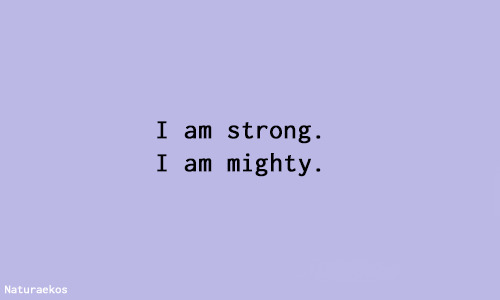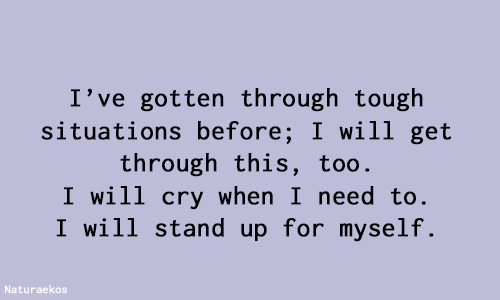Note
Hi, I would like to start teaching myself Korean. Where should I start? How should I approach learning Korean?
Always start with learning Hangul (한글) the Korean writing system! If you can learn hangul you’ll be able to read Korean whether or not you know the actual vocab word. Hangul is super simple once you break it down and it’s meant to be easy to learn and remember.
After that I would start with memorization and simple words for sentence making. Verbs are SUPER important for Korean. But start with making them formal with the -요 ending. If you learn them like that then it’s easier to talk to people politely. There should be posts where I linked resources. I’ll find them for you later since I’m at work rn :)
38 notes
·
View notes
Note
hi, would you have handwritten notes about Batchim to share?? i also found you because of Pinterest, i'm not the person who sent the previous question, but i was going to send u the link to find ur notes there, but tumblr doesnt allowd link in here.... but is just u search for ''korean notebooks'' and youll find planty of ur notes haha i really love the layout that u put on ur notes!!! xx
Ooh I should have some, I’m at work right now so I’ll need to check once I’m at home~ :) but there should be some both handwritten an electronic that I can look for.
Thanks for the Pinterest info I’m curious about it now, I wonder who liked my notes enough to share :P
6 notes
·
View notes
Note
Do you have more pictures of your notes? I really like how they’re laid out 😭 I found 2 pages of yours on pinterest~ 💖
Which notes did you like?? The typed out ones from forever ago or the handwritten ones?
Also~ I had no clue my pages were on Pinterest 😅 can you send me the link?
4 notes
·
View notes
Text
Korean Word Of the Day
짝사랑
Crush (on someone)
111 notes
·
View notes
Text

2월 17일 🇰🇷 한국어.
Last time, I studied the ~는/은/을 것 grammar point, but what I did not do there was to write some sample sentences, so that's what I did today. First of all, I did a quick review of my notes and then wrote some sentences and posted it on HiNative to get corrections. I must say that actually writing sample sentences made all the grammar point completely clicked in my head, at least what it comes to its structure, although I know there's still a lot out there for me to learn.
Have an amazing start of the 주! 🌻🌻
55 notes
·
View notes
Photo
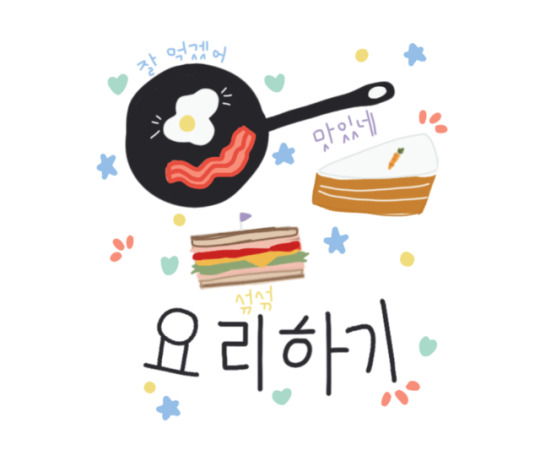
요리하기 어휘 - Cooking Vocabulary
Hi there! I realize I haven’t posted any big vocabulary posts in a while, so I think it’s worth giving you guys a little break from grammar! Enjoy <3
Vocab // 어휘 [mostly korean foods]
음식 - food ~ 한식 - korean food [한국 + 음식]
고기 - meat ~ 물고기 - fish [lit. water meat] ** not the same as 해물 - seafood ** ~ 불고기 - korean marinated beef ~ 닭고기 - chicken ~ 소고기 - beef
소시지 - sausage
밥 - rice / meal ~ 볶음밥 - fried rice
국 // 탕 // 갱 - soup 1. 국 - side dish soup [example: 미역국 - seaweed soup! this is very popular at birthday celebrations] 2. 탕 // 갱 - full meal soup [example: 감자탕 - pork bone soup] ** you might get a side of 국물 [broth] with a main dish **
찌개 // 전골 - stew 1. 찌개 - thicker stew [example: 김치찌개 - kimchi stew] 2. 전골 - hotpot [example: 소고기전골 - vegetable and beef hotpot]
건더기 - ingredients in soup [like vegetables, meat, sauce] ** to help with understanding the difference between 국 and 찌개, you won’t get much 건더기 in a 국 like soup **
어묵 - fish cake
전 - korean pancake ~ 파전 - green onion korean pancake (my favourite)
떡볶이 - stir-fried rice cake
순대 - pork blood sausage
만두 - dumplings
김밥 - for lack of better words, korean styled sushi [lit. rice wrapped in seaweed - 김]
Verbs // 동사
요리하다 - to cook
다듬다 - to prepare
썰다 - to chop / cut
섞다 - to mix [not to be confused with 썩다 - to rot]
젓다 - to stir
반죽하다 - to knead dough
붓다 - to pour
까다 [벗기다] - to skin / peel [to peel / skin meat]
데우다 - to heat
태우다 - to burn
볶다 - to stir-fry
굽다 - to roast / grill
찌다 - to steam
식다 - to cool down
낳다 - to add
기름을 두르다 - to oil
간을 보다 - to taste test
끓다 - to boil
More Vocab // 더 어휘
오븐 - oven
칼 - knife
도마 - cutting board
냄비 - pot
프라이팬 - frypan
밥솥 - rice cooker
Example Sentences:
요즘 한식을 요리하고 싶어요 - these days, I want to cook korean food
10분 만두를 쪄요 - steam dumplings for 10 minutes
건더기를 김치찌개에 넣어요* - add the ingredients into the kimchi stew
어묵을 썰고 끓은 물에 넣어요* - slice the fish cake and add into boiling water
*you can pronounce 넣어요 like -> 너요
That’s it for this lesson today! I hope you enjoyed and you learned something! What’s your favourite Korean food?
Happy Learning :)
~ SK101
2K notes
·
View notes
Text
#13 Using Adjectives
I am back! Did you miss me? Yeah, me neither ;)
Alright, we did a bit of a layover and some practice, so let’s get on to the next part! We are going to learn how to use adjectives!
Let’s go! 가자!

Alright, so first let us recall what an adjective is. Believe it or not, but that will help to identify what we are going to do. Here’s the quote from my Sentence Structure post in which we talked about definitions.
Adjective
Adjectives were confusing to me until I went through it again. It basically is nothing but a descriptor for the noun, which can be subject or object. My mother buys tasty cookies. My beautiful mother buys cookies.
We have also learned that Korean sentences must end in a verb or adjective. Sentences can have both of course as you can see in the examples, so if that happens, where does the adjective go? Where will the verb be? Which of them is at the end of the sentence? We’ll talk about all of that in this post.
First of all, when we look at dictionaries we can see that all verbs and adjectives end in 다 but that’s only the dictionary form, it’s going to be changed to be used in a sentence. First, you drop 다 and then add something to the stem, like particles or conjugation.
There are two ways to use adjectives.
a small boy
The boy is small
Both are handled differently in Korean.
Let’s look at 1. When you simply want to describe a noun as in the first example, you drop the 다 and add ~ㄴ after vowels or 은 after consonants to the stem. The stem is the part without the 다.
Examples:
big boat: 큰 배
big: 크다 -> 크 -> 큰
boat: 배
expensive food: 비싼 음식
expensive: 비싸다 -> 비싸 -> 비싼
food: 음식
good son: 좋은 아들
good: 좋다 -> 좋 -> 좋은
son: 아들
I want a big boat:
wrong: 저는 크다 배를 원하다
right: 저는 큰 배를 원하다
Remember we are not conjugating verbs yet, so the ending still remains 다. We only look at the adjectives in this post. As you can see above the wrong sentence uses the 다 dictionary version for the adjective, that’s not correct. Make sure to drop the 다 and attach ~ㄴ/ 은.
Now you may wonder how to know which way to use adjectives you may need to use and how to recognize them. That is pretty easy. Let’s take another example that shows the difference:
The food is expensive: 음는 비싸다 (not conjugated)
expensive food: 비싼 음식
1 is a legit sentence it works as is. You are not using ~ㄴ/ 은 for those. 2 is not a full sentence it needs more to make a sentence like a verb or adjective. This kind of case uses ~ㄴ/ 은. For example:
I eat expensive food: 저는 비싼 음식을 먹다 (not conjugated)
Expensive food is delicious: 비싼 음식을 맛있다 (not conjugated)
Remember that the 2nd case (that uses ~ㄴ/ 은) does need at least a verb that acts on the object the adjectives describes. “I small house” doesn’t make any sense, but “I have a small house” is a full sentence. “I big burger” makes no sense but “I eat a small burger” is perfectly fine.
But if you say “The burger is small” you don’t need the ~ㄴ/ 은. (See example 1)
Note: There are some adjectives that end in 있다 like for example 맛있다 (to be delicious). Those adjectives do not use ~ㄴor 은 but 는.
delicious: 맛있다 -> 맛있는
I eat delicious food: 저는 맛있는 음식을 먹다
Head spinning? Confusion wrapped around your head? No worries, I felt the same. But all you have to remember is that when you need to use ~ㄴ/은 compared to not, and that adjectives ending in 있다 use 는.
If you got questions, comments, corrections or concerns, hit me up and I’ll try to help, though I’m clearly not an expert. We’ll have an easy quicky again next time, so you got time to practice adjectives :)
Until then, stay awesome! 화이팅!
261 notes
·
View notes
Text
Ordering at a Cafe in Korean
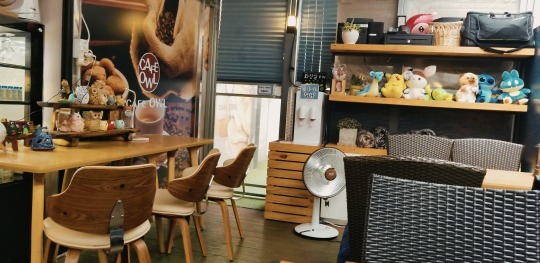

I’m going to go through the average conversation I have at a cafe here in Korea. Refer to Cafe Drink Vocabulary to say more specific drinks~
BARISTA: 어서오세요/안녕하세요 | Welcome/Hello
CUSTOMER: 네 안녕하세요 | Hello
BARISTA: 주문하시겠어요? | Are you ready to order?
CUSTOMER: ___ 한잔 주세요 | I’ll have a ___.
커피 | coffee
아메리카노 | americano
카페라떼 | cafe latte
두잔 | 2 cups/glasses
세잔 | 3 cups
네잔 | 4 cups (keep going like that with Native Korean numbers. After 4, you do not shorten the number)
BARISTA: 어떤 사이즈로 드릴까요? | What size?
CUSTOMER: ___ 주세요. | A ___, please.
스몰 | small
미디엄 | medium
레귤러 | regular
라지 | large
BARISTA: 더 필요하신거 있���요? | Do you need anything else?
CUSTOMER:
아니요. 그거면 되요. | No that’s all.
네. 초코케이크도 하나 주세요. | Yes. Please give me a slice of cake as well.
네. 아이스바닐라라떼 한잔 하고 딸기 마카롱 두개 주세요 | Yes. Please give me an iced vanilla latte and 2 strawberry macarons.
BARISTA: 여기서 드실거예요? | Are you eating here?
CUSTOMER:
네 여기서 마실거예요. | Yes, I’ll drink it here.
아니요. 가져갈거예요. | No I’m taking it out.
아니요. 포장해주세요. | No, please wrap it up (to-go, usually for food or food/drink).
아니요. 테이크아웃이에요. | No, it’s take-out.
BARISTA: 오천 사백원입니다. | It’s 5,400 won. (Use Sino Korean numbers with money)
CUSTOMER: 카드 받으세요? | Do you take card?
BARISTA:
네 받습니다 | yes
죄송합니다 현금만 받습니다 | Sorry we only take cash
BARISTA: 영수증 드릴까요? | Would you like the receipt?
CUSTOMER:
네 영수증 주세요 | yes please give me the receipt
아니요 괜찮아요 | no I’m okay
BARISTA: 감사합니다. 잠시만 기다려주세요. | Thank you. Please wait a moment.
CUSTOMER: 감사합니다 | thank you.
Practice:
Try to place an order for one of the pictures below
1) Sangria Ade, 2) Iced americano and a scone, 3) Tiramisu cake (I think) and a latte, or 4) Affogato

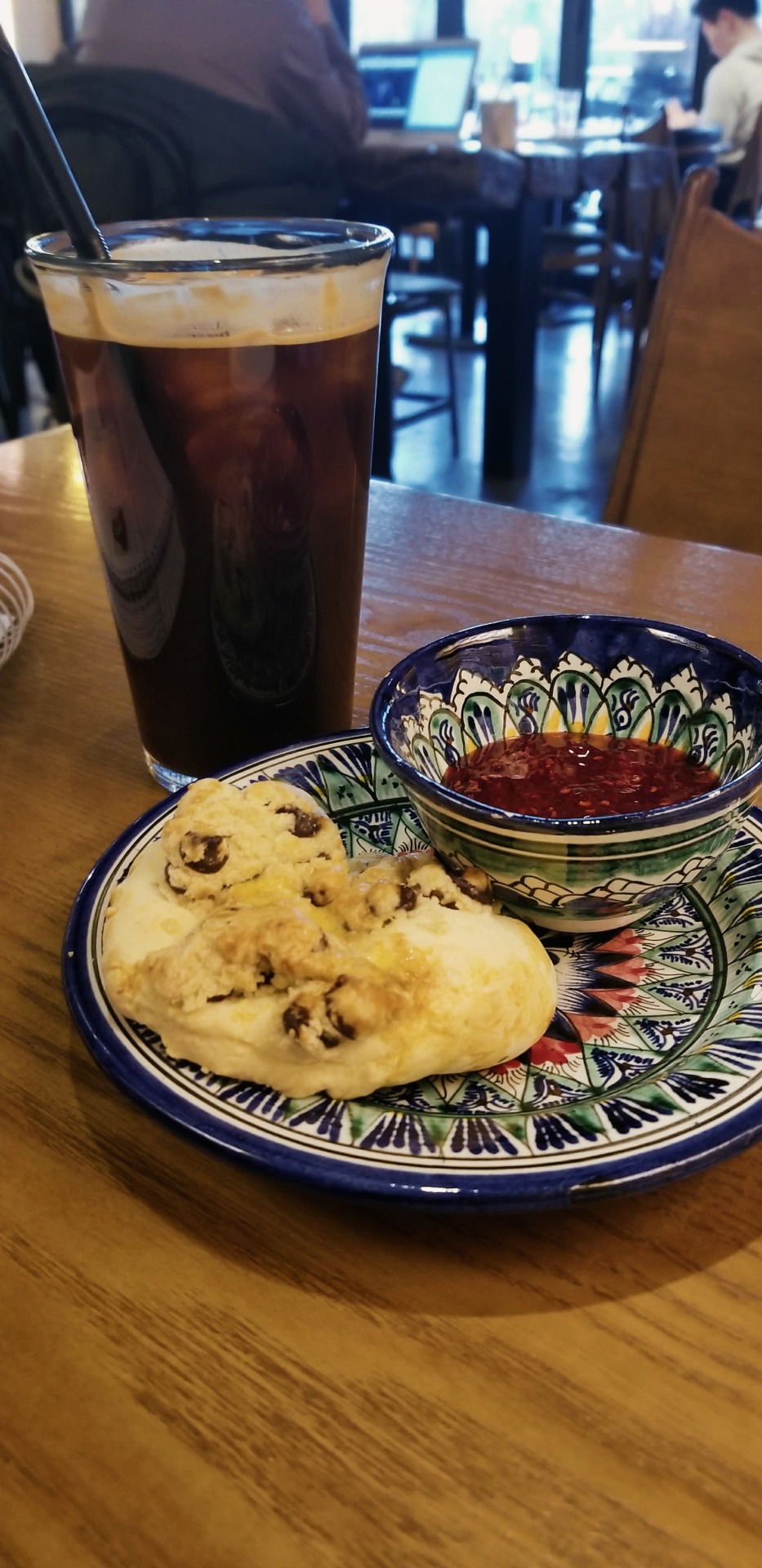

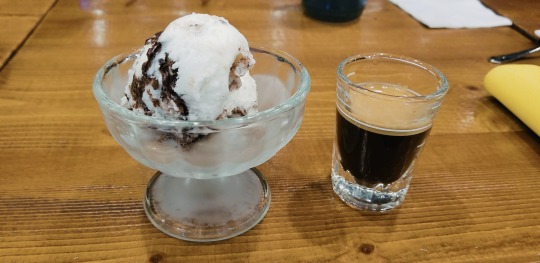
1K notes
·
View notes
Text
i just want to speak every language ever, is that too much to ask
77K notes
·
View notes
Text




Got stuck on a long hold today at work. So I put sticky notes all over my office, and my snack :) Sorry for the crap quality lol
70 notes
·
View notes
Text
rb with ur age u turn in 2019 and the school subject u suck(ed) at
32K notes
·
View notes
Text
Korean Word Of the Day
게으른
Ge-eu-leun
Lazy
133 notes
·
View notes
Text
let go of this romanticised view of language learning. let go of flowery image that every time you will sit down with a language book, or course everything will go just fine. that you’ll grasp concepts at once and you’ll establish a routine in no time. stop romanticising the idea that you won’t have to put in hard work.
some days you’re not going to want to practice your target language, or it’ll be 10pm and you’re tired after a long day but you have to revise verb conjugations. when you so effectively convince people that all you need to have is a moleskine notebook, an aesthetic lighting and they’ll be on their way to fluency, what you do is that so many people feel like failures when they don’t get something on the first try. they feel like perhaps there’s something wrong with them and that they’re simply not “meant” for language learning.
instead let’s romanticise working hard, and the sheer feeling of satisfaction that comes from that instead of an aesthetic that just leads people away from language learning
3K notes
·
View notes
Text
REBLOG THIS IF
↝ you’re an active studyblr
↝ you love making new friends
↝ your followers are always welcome to message you!
i’m in serious need of some more studyblrs to follow and i’d love to interact with this community bc everyone is so warm and friendly and !!!! it’s the best
2K notes
·
View notes
Text
The Korean Alphabet
This is not, I repeat NOT a post for the Korean alphabet, but rather on it’s history. If you want to find the Korean Alphabet post, check it out here. Some of you were interested in the history of Korea as well, so I hope you enjoy!
P.S This is a really bite-size post *pats self on the back* Took me so long shortening it! :D
P.P.S This is referenced off Ministry of Korean Culture and Tourism- Hangul History so please don’t shout at me in the comments/messages :)

The Korean alphabet was created by Sejong the Great (세종대왕) (se-jong-dae-wang) during his 25th year. He was the 7th king of Joseon. Sejong the Great named this language 한글 (han-geul/gul) and it consisted of 28 letters. 한글 (han-geul/gul) was originally called 훈민정음 (hun-min-jeong-eum) and was recorded in the book also called 훈민정음 (hun-min-jeong-eum) (created during Sejong the Great’s 28th year) which not only contained the Korean alphabet but how to use them as well as his reason as to why he created the Korean alphabet. 훈민정음 (hun-min-jeong-eum) also (roughly translated) means in hanja; The correct/right sound teaching the people.
29th October 1933, the 한글 맞춤법 통일안 (Hangul Correct Spelling Unification) is published, followed by 조선어 표준말 모음 (Korean Proper Word Collection) in 1936.
한글날 (han-geul/gul nal) is celebrated every year on the 9th of October to commemorate the creation of the Korean language; 한글 (han-geul/gul)!
Reference from: Ministry of Korean Culture and Tourism- Hangul History
Much love, Danielle
173 notes
·
View notes
